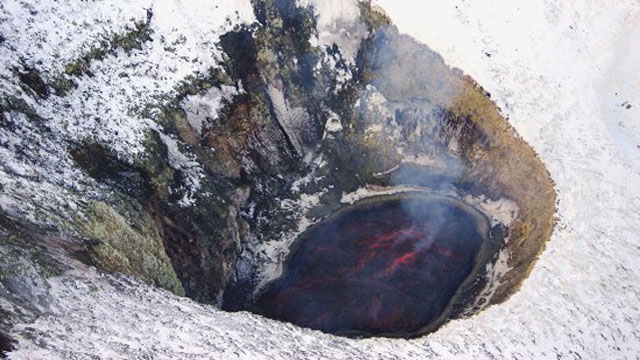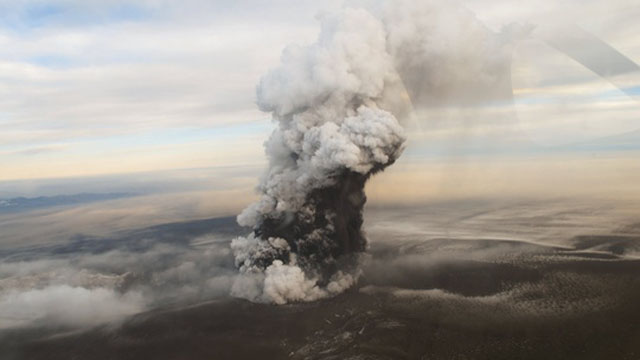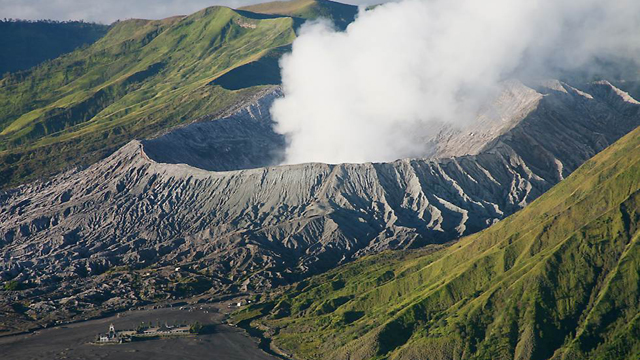Laacher See: The caldera in the middle of Europe
We’ve been discussing calderas recently on Eruptions (I wonder why) and the Laacher See in Germany came up. I’ve actually been to the Laacher See on a field trip lead by one of the world’s experts on the caldera, Dr. Gerhard Worner. So, I thought I’d post some pictures and talk a little about this feature that up until maybe 5 years ago, I didn’t even know existed.
Laacher See, Germany
The Laacher See is a caldera in the Rhine Valley of Germany (see below). It is only ~30 km south of Bonn and ~60 km south of Koln (Cologne), just to the west of the Rhine River. It is part of the East Eiffel Volcanic Field and the 8-km wide caldera is currently filled with a lake. Now, most people don’t think of volcanic activity occuring in central Europe, but it is believed that a mantle plume lies below this part of the continent, creating rifting and the volcanism in the Eifel Volcanoes. Laacher See last erupted ~12,900 years ago, but it was a doozy, erupting ~6 km3 (dense rock equivalent, i.e., taking all the ash and compacting the air out of it; closer to 20 km3 of uncondensed) of phonolite (an silica-undersaturated magma found in continental rift zones) tephra, making it similar in size to Pinatubo in 1991. Phonolite tends to have some odd minerals in it, such as the light blue feldspathoid, Hauyne, but the Laacher See magmatic body appears to be a complex mix of crystals from different sources.
The ash from the eruption can be found in the North Sea and throughout central Europe. Some of the deposits found near the caldera is remarkable, and (to me) seem so anomalous for the middle of the German countryside. There is some suggestion that the Laacher See eruption could have had a strong effect on the climate of Europe after the eruption and the human populations living there at the time. Although it has been quiet since the climactic eruption ~12,900 years ago, the caldera should still be considered potentially active as CO2 seeps exist in some parts of the lake, suggesting that there is still magma degassing under the lake. In fact, the CO2 can be a hazard, supposedly killing some Medieval monks in their sleep. There is no hazard map for Laacher See.
Here are a few pictures from my trip to the Laacher See (as a part of the 2007 Goldschmidt Meeting in Cologne). Click on the image to get a bigger version.
Pumice from the 12.9 ka Laacher See eruption at the Standort Wingertsbergwand, a quarry near the caldera. Note the trees at the top of the ridge for scale.
This is the plucky mascot that guided us to the deposit.
A close up of the tephra deposits showing the beautiful layers of ash, pumice and lithics. This is a record of the pyroclastic flows and ash fall from the multiple days of the Laacher See eruption.
Another view of the stunning tephra deposits.
Dr. Worner points out some of the features of the tephra deposits.
Dr. Worner uses a hand-made sampling device (i.e., a cut up soda bottle) to gather some of the volcanic gases – mostly CO2 bubbling up on the shores of the Laacher See. You can see the bubbles in the foreground in the shallow water.
A view across the caldera lake. You can see the Maria Laach Abbey on the opposing shore.
And really, what a better place to end the day than at a Brewery that keeps its beer in an underground basalt flow.












